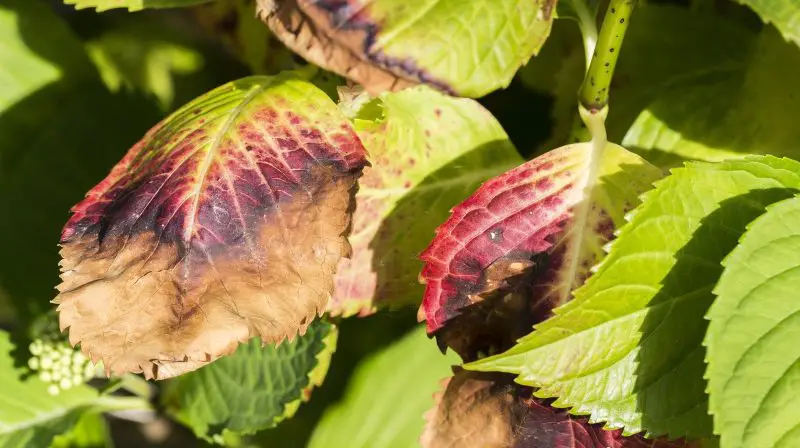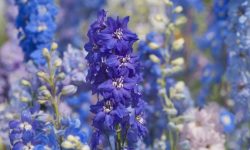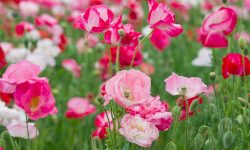Hydrangeas are beloved garden plants known for their large, showy blooms and lush foliage. However, one common issue that many gardeners face is the yellowing of hydrangea leaves. When hydrangea leaves start turning yellow, it can signal various underlying problems that need attention.
Yellow leaves not only detract from the plant’s aesthetic appeal but also indicate stress that may hinder flowering and overall growth. Understanding why hydrangea leaves turn yellow and learning how to fix the problem quickly is essential for maintaining healthy, vibrant plants.
Understanding Why Hydrangea Leaves Turn Yellow

The yellowing of hydrangea leaves is a symptom rather than a disease itself. It is often caused by environmental stresses, cultural practices, or nutrient deficiencies. By identifying the root cause, gardeners can take the appropriate corrective measures to restore their hydrangea’s health.
Watering Issues: Both Overwatering and Underwatering
Hydrangeas prefer consistently moist soil, but watering too much or too little can lead to yellow leaves. Overwatering causes the soil to become waterlogged, depriving roots of oxygen and leading to root rot. This stress manifests as yellowing leaves because the roots cannot absorb enough nutrients and water to support healthy foliage. On the other hand, underwatering results in drought stress, causing the leaves to turn yellow as the plant struggles to conserve resources. Balancing watering is key, ensuring the soil remains moist but well-drained.
Nutrient Deficiencies Affecting Leaf Color
Yellow leaves can also signal a lack of essential nutrients, particularly nitrogen, iron, and magnesium. Nitrogen deficiency often results in uniform yellowing across older leaves, as nitrogen is a mobile nutrient the plant reallocates to newer growth. Iron deficiency, commonly known as chlorosis, causes yellowing mainly between leaf veins while veins remain green. This pattern suggests the plant struggles to synthesize chlorophyll properly. Magnesium deficiency also creates yellow patches, usually starting on older leaves. Each deficiency requires tailored fertilization to address the imbalance.
Soil pH and Its Impact on Nutrient Availability
Hydrangeas are sensitive to soil pH, which influences nutrient uptake and flower color. When soil pH is too high (alkaline), it can lock out iron and other micronutrients, causing yellow leaves with green veins—a classic iron chlorosis symptom. Conversely, very acidic soils may cause other nutrient imbalances. Maintaining a slightly acidic to neutral pH (around 5.5 to 6.5) helps hydrangeas absorb nutrients efficiently and supports vibrant foliage.
Pest and Disease Stressors
Insects such as aphids, spider mites, or scale can sap plant vitality, causing yellowing leaves as part of their damage. Similarly, fungal infections like powdery mildew or root rot weaken the plant, leading to yellowing and leaf drop. Early detection and treatment are crucial to prevent severe damage and to promote recovery.
Environmental Stress: Sunlight, Temperature, and Transplant Shock
Hydrangeas thrive in partial shade and may suffer if exposed to intense, direct sunlight for prolonged periods. Excess sun can scorch leaves, causing yellow or brown patches. Temperature extremes, especially sudden cold snaps or heatwaves, also stress plants, triggering yellow foliage. Transplanting hydrangeas without proper acclimation can shock the roots, resulting in leaf yellowing until the plant re-establishes.
How to Fix Hydrangea Leaves Turning Yellow Quickly
Once the cause of yellowing leaves is identified, corrective actions should be implemented promptly to minimize damage and restore the plant’s health. Effective fixes often involve adjustments in watering, soil management, nutrient supplementation, and environmental protection.
Adjusting Watering Practices for Optimal Moisture
Correct watering is the foundation of healthy hydrangea foliage. If overwatering is suspected, improving soil drainage is essential. This might include amending soil with organic matter to enhance porosity or ensuring pots have sufficient drainage holes. For garden hydrangeas, avoid planting in areas where water pools after rain. Conversely, if underwatering causes yellow leaves, increase watering frequency but always check soil moisture first. The best practice is to water deeply and less frequently rather than shallow, daily watering, promoting strong root systems.
Amending Soil and Balancing pH Levels
Testing the soil pH around your hydrangeas can reveal imbalances affecting nutrient uptake. For alkaline soils causing iron chlorosis, adding soil acidifiers such as elemental sulfur or iron sulfate helps lower pH and unlock micronutrients. Applying organic mulches like pine needles or shredded oak leaves can naturally acidify soil over time. If soil is too acidic, incorporating lime can raise pH toward the neutral range. Regular soil testing ensures that adjustments maintain ideal conditions for hydrangea health.
Applying the Right Fertilizers to Correct Deficiencies
Fertilizing hydrangeas with balanced, slow-release fertilizers helps address nutrient deficiencies gradually and safely. For nitrogen deficiency, use a fertilizer with higher nitrogen content to stimulate leafy growth. Iron supplements, either foliar sprays or soil applications of chelated iron, are effective against chlorosis. Magnesium deficiencies can be remedied with Epsom salts applied to the soil or as a foliar spray. Avoid overfertilizing, which can cause salt buildup and further stress.
Managing Pests and Diseases Effectively
If pests are causing yellowing, carefully inspect leaves and stems for insects or signs of infestation. Introducing beneficial insects like ladybugs or applying insecticidal soaps can control aphids and mites. For fungal diseases, improving air circulation by pruning crowded branches reduces humidity that promotes infections. Fungicides may be necessary for severe outbreaks but should be used as directed to avoid harming beneficial organisms. Prompt treatment helps prevent spread and allows the plant to recover.
Protecting Hydrangeas from Environmental Stress
To shield hydrangeas from harsh sun, provide dappled shade or use shade cloth during the hottest parts of the day. Mulching around the base helps moderate soil temperature and retain moisture. Avoid exposing hydrangeas to sudden temperature changes by planting in protected locations or using frost cloths in cold weather. After transplanting, water thoroughly and provide temporary shade to reduce transplant shock. With proper care, hydrangeas can rebound quickly from environmental stress.
Additional Tips for Maintaining Healthy Hydrangea Foliage
Maintaining vibrant green leaves on hydrangeas is a continual process that requires attention to growing conditions year-round. Beyond addressing yellowing leaves, adopting proactive care routines ensures plants thrive and bloom beautifully.
Regular Soil Testing and Amendment
Routine soil testing every couple of years helps monitor pH and nutrient levels, allowing timely corrections before issues manifest visibly. Organic matter additions, such as compost or well-rotted manure, improve soil structure and nutrient availability, benefiting hydrangea roots.
Proper Pruning to Enhance Airflow and Growth
Pruning hydrangeas at the appropriate time and technique promotes healthy growth and reduces disease risk. Removing dead or overcrowded branches opens airflow, preventing fungal problems that can contribute to leaf discoloration.
Consistent Watering and Mulching Practices
Keeping soil consistently moist while avoiding waterlogging is critical. Mulching conserves moisture, suppresses weeds, and stabilizes temperature fluctuations, all contributing to strong hydrangea health.
Monitoring for Early Signs of Trouble
Regular inspection of leaves and stems helps catch pests, diseases, or nutrient issues before yellowing becomes severe. Early intervention increases the likelihood of quick recovery.
FAQs about Hydrangea Leaves Turning Yellow
Why are my hydrangea leaves turning yellow?
Yellow leaves on hydrangeas often result from improper watering, nutrient deficiencies, soil pH imbalance, pests, or environmental stress.
How can I fix yellow leaves on my hydrangea quickly?
Adjust watering to keep soil moist but not soggy, amend soil pH if needed, fertilize properly, and treat any pest or disease issues promptly.
Can soil pH cause hydrangea leaves to turn yellow?
Yes, alkaline soil can lock out nutrients like iron, causing yellow leaves with green veins—a condition called chlorosis.
What nutrients do hydrangeas need to prevent yellowing leaves?
Hydrangeas need nitrogen, iron, and magnesium mainly. Deficiency in these causes different patterns of yellowing.
Is overwatering harmful to hydrangeas?
Yes, overwatering can cause root rot and reduce nutrient uptake, leading to yellow leaves and poor plant health.
Conclusion: Restoring Your Hydrangea’s Vibrant Green Leaves
Hydrangea leaves turning yellow can be alarming, but with careful observation and prompt corrective action, it is a manageable issue. Understanding the underlying causes such as watering imbalances, nutrient deficiencies, soil pH issues, pests, diseases, or environmental stress guides effective solutions. By adjusting watering practices, amending soil conditions, applying targeted fertilizers, controlling pests and diseases, and protecting plants from harsh conditions, gardeners can restore their hydrangeas to vibrant health quickly. Consistent care and monitoring will keep hydrangea foliage lush, green, and ready to showcase their stunning blooms season after season.






